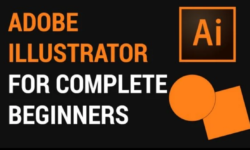The Psychology of Color in Game Design & Development by Emilio Padulo
Release date:2022
Author:Emilio Padulo
Skill level:Beginner
Language:English
Exercise files:Yes
What Will I Learn?
- Learn the Psychology behind different colors
- Comprehensive understanding of Color Theory
- Techniques of using Color in Game Design
- How to use different Color Schemes in the right areas
- What are the best tools to create your own Color Palettes
Requirements
A willingness to Learn the different ways Color Psychology & Theory can impact Game Design
Description
The most comprehensive course on how Color Theory in Game Design Works!
Why this course is special
This course not only covers the basics of what Color Theory is. It also showcases how different colors can affect players in many ways.
This course will talk about what the psychology of certain colors is, how they effect us, what they represent and the difference shades of colors mean. Understanding this is crucial in how to design levels, characters, environments, mechanics etc…
We then take a look at different color schemes and what they are. From that knowledge, we can start to see how certain schemes can work in certain situations and with creating our color palettes.
After the color theory and psychology is covered, we can now deep dive into how we can apply our new found knowledge in video games. We will look at the different functions color has in video games, colors as identifiers, varied content and much more.
My Guarantee
For every student that joins the course, they will be able to ask questions about their own games and how to go about using color to develop them. I will be available to answer any and all questions for all of my students.
The Course Structure
The course is almost all video. It will take between 2.5 hours to complete. After you finish this course, you will have a stronger understanding of how to design your games with different color palettes. You will understand the benefits of using certain schemes to create the exact emotion or feeling you want to players to have.
The course is structured into 3 main Sections.
Section 2: Introduction to Color Psychology
In this section, We will be taking a solid look at how each individual color impacts us in every aspect. How they can have multiple different meanings and emotions attached to them. What they represent in society and how they effect us in our daily lives. We will also look at how some shades have very specific impacts on us.
Section 3: Different Color Schemes
Here, we look at what color schemes are and what they do. We will look at the multiple different ones that exist are the ways they are used in order to tell a certain story.
Section 4: How Color works in Game/Level Design
This is my favorite section because in this one, we will take all that knowledge we just gained from the previous 2 sections, and put it into practice. Basically we will see how colors that create a mise en scene for our players and help pull them into the game instead of pushing them. We look at the functions color has in games, what color is supposed to be used in specific ways, creating color layouts, how to vary content, how to create our very own color palette and so much more.
Money back Guarantee
The course comes with an unconditional, Udemy-backed, 30-day money-back guarantee. This is not just a guarantee, it’s my personal promise to you that I will go out of my way to help you succeed.
Certification of completion when finishing this course
When you complete 100% of the videos in this course, you will be emailed a certificate of completion by Udemy so you can show it as proof of your expertise and that you have completed a certain number of hours of instruction in the course topic.
Who is the target audience?
- Game Designers
- Level Designers
- Artists
- Game Developers
- Digital Artist





 Channel
Channel






17 is missing???